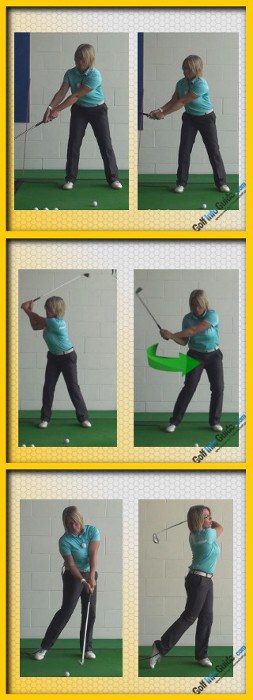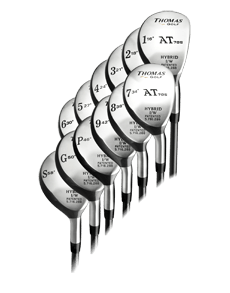 Top 3 Tips on Golf Weight Shift
Top 3 Tips on Golf Weight Shift
If you are a Bryson DeChambeau fan, you will want to steer clear of what I am about to tell you. He applies something called the “stack and tilt” and it is as far from the proper weight shift as you can be.
With that said, I will be covering how to properly shift your weight throughout the swing, and how to correctly fix any mistakes you are currently making in your weight shift. I realize there are hundreds of articles out there that have the “cure-all” when it comes to weight shifting, but I will provide what has worked for me throughout all my years in the game.
If you apply my simple tips, and dedicate the time to perfecting them, you too will see the same success that I have for so long.
The first thing I want you to focus on is your front foot. You will want to get the weight to the sole of your front foot, which ensures you are able to load throughout your swing. To test yourself with this one, simply address the ball with your normal set up, and focus on your front foot.
Where is the weight going? If it is on your toes, then drop it back a little bit to the sole of your foot. This is the ideal spot to place your weight, and it will help you with your weight transfer throughout the swing, and also ensure that you remain balanced throughout.
The whole reason we look at weight shifting, is to develop more power. If you want to develop the max power throughout your swing, then you will need to transfer your weight properly from start to finish. As I just mentioned, the weight transfer begins in your front foot… and moves to the heel of your foot as you begin your takeaway.
Again, if you feel too much pressure on your toes, then make the necessary adjustments and proceed from there. As you take your swing, you will feel the weight shift from the sole of your foot, to the heel. This weight shift allows for you to square the club back up at contact, and impact the ball with more power and comfort. As the case is with many golfers, the mistake is made when focusing on the hips when looking at weight shift.
Most people believe that by loading the hips and pushing them through the swing will cause more power, but I will be the first to admit this is false. By allowing your weight to move from the sole of your foot to the heel, you will be able to pivot and drive the club forward, which will ultimately help you add power to your swing.
Now that you know how to properly transfer the weight amongst your front foot, what is next? Well, you will now want to focus on when to shift the weight from the front foot, to the back foot, then back to the front foot for the finish of the swing. I want you to first address the ball, keeping your focus on where the pressure is being applied on that front foot.
Now, begin your swing and as you take the club back begin to shift the weight to the back of your stance. You will want to begin the shift the moment you take the club away from the ball, which will keep your body in sync throughout. As you begin to turn your shoulders, bring the weight to the back of your stance. It should now be on your back leg.
As you begin your follow through, your weight should shift back to the middle of your stance as you make contact with the ball. Your hips should open up right before the weight transfer to your front foot, and then your hands will follow suit. Now, complete your swing through the ball, with your hips facing the target. As you end your swing, the weight should now be solely on your front foot, with your body facing the intended target.
In all, weight shift is vital to the golf swing, and proper shifting of the weight allows for better contact with the ball and misses that land closer to the target. To perfect these drills, it will take quite a bit of time. You won’t be able to confidently apply any of these without investing the correct amount of time into each.
Changing how you shift your weight can be unsettling, and it will mess with your mind at first… which as you know with golf, can really hurt you. I suggest that you truly invest the correct amount of time on the range to ensure that you are comfortable enough with your new swing motion before taking to the course.
Update:
- Start with a Balanced Setup: Begin with a balanced stance, with your weight evenly distributed between both feet. This sets the foundation for a proper weight shift during the swing.
- Shift Weight Smoothly: During the backswing, transfer your weight to your back foot by turning your hips and shoulders. Then, initiate the downswing by smoothly shifting your weight back to your front foot, driving through the ball.
- Maintain Stability: Avoid swaying or sliding your hips laterally during the swing. Focus on rotating around a stable center to maintain balance and consistency.
Q&A on Golf Weight Shift:
Q1: Why is weight shift essential in the golf swing? A1: Proper weight shift helps generate power, improves ball contact, and allows for a more consistent swing.
Q2: How can I improve my weight shift? A2: Practice drills that promote a smooth weight transfer, such as the “step-through drill” or using a golf swing aid like a weighted club.
Q3: Should my weight shift to the front foot or back foot during the backswing? A3: During the backswing, the weight should shift slightly to the back foot as you turn your hips and shoulders.
Q4: How can I prevent early weight shift during the downswing? A4: Focus on starting the downswing with your lower body and delaying the release of the hands, ensuring a proper sequence of movements.
Q5: Should I shift my weight more to the left side (for right-handed golfers) on the downswing? A5: Yes, during the downswing, your weight should shift more to your front foot to drive through the ball and maximize power.
Q6: How can I improve weight transfer for better ball-striking? A6: Work on your hip and shoulder turn during the backswing, and initiate the downswing by shifting your weight to your front foot.
Q7: Should I feel my weight on my toes or heels during the swing? A7: Ideally, your weight should be more towards the balls of your feet during the swing to maintain balance and stability.
Q8: Can I practice weight shift drills at home? A8: Yes, you can practice weight shift drills at home without a ball, focusing on the proper movement and sequence.
Q9: Should I consciously think about weight shift during the swing? A9: While it's essential to understand weight shift, during the swing, it's best to let your body execute the movement naturally.
Q10: How can weight shift affect my ball flight? A10: Proper weight shift can lead to a more consistent and controlled ball flight, resulting in improved accuracy and distance.
Q11: Can a lack of weight shift cause slicing or hooking the ball? A11: Yes, improper weight shift can affect the swing path and clubface angle, leading to slicing or hooking the ball.
Q12: Should I shift my weight on the backswing for short shots around the green? A12: Yes, even on short shots, a slight weight transfer can help create a more solid strike and better control.
Q13: How can I maintain balance while shifting my weight during the swing? A13: Focus on a stable base with your feet planted firmly and avoid swaying or sliding laterally during the swing.
Q14: Should I consciously feel the weight shift during the swing? A14: Initially, you may need to be aware of weight shift, but with practice, it becomes a natural part of your swing.
Q15: Can a weight shift improve my distance with the driver? A15: Yes, a proper weight shift can help generate more power and increase distance with the driver.





